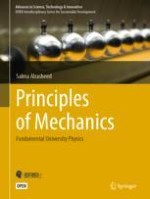5.1 Linear Momentum and Collisions
5.2 Conservation of Linear Momentum
5.3 Impulse and Momentum
5.4 Collisions
5.4.1 Elastic Collisions
5.4.2 Inelastic Collisions
5.4.3 Elastic Collision in One Dimension
5.4.3.1 Special Cases
5.4.4 Inelastic Collision in One Dimension
5.4.5 Coefficient of Restitution
-
If \(e=1\) the collision is perfectly elastic.
-
If \(e<1\) the collision is inelastic.
-
If \(e=0\) the collision is perfectly inelastic (the two bodies stick together).
